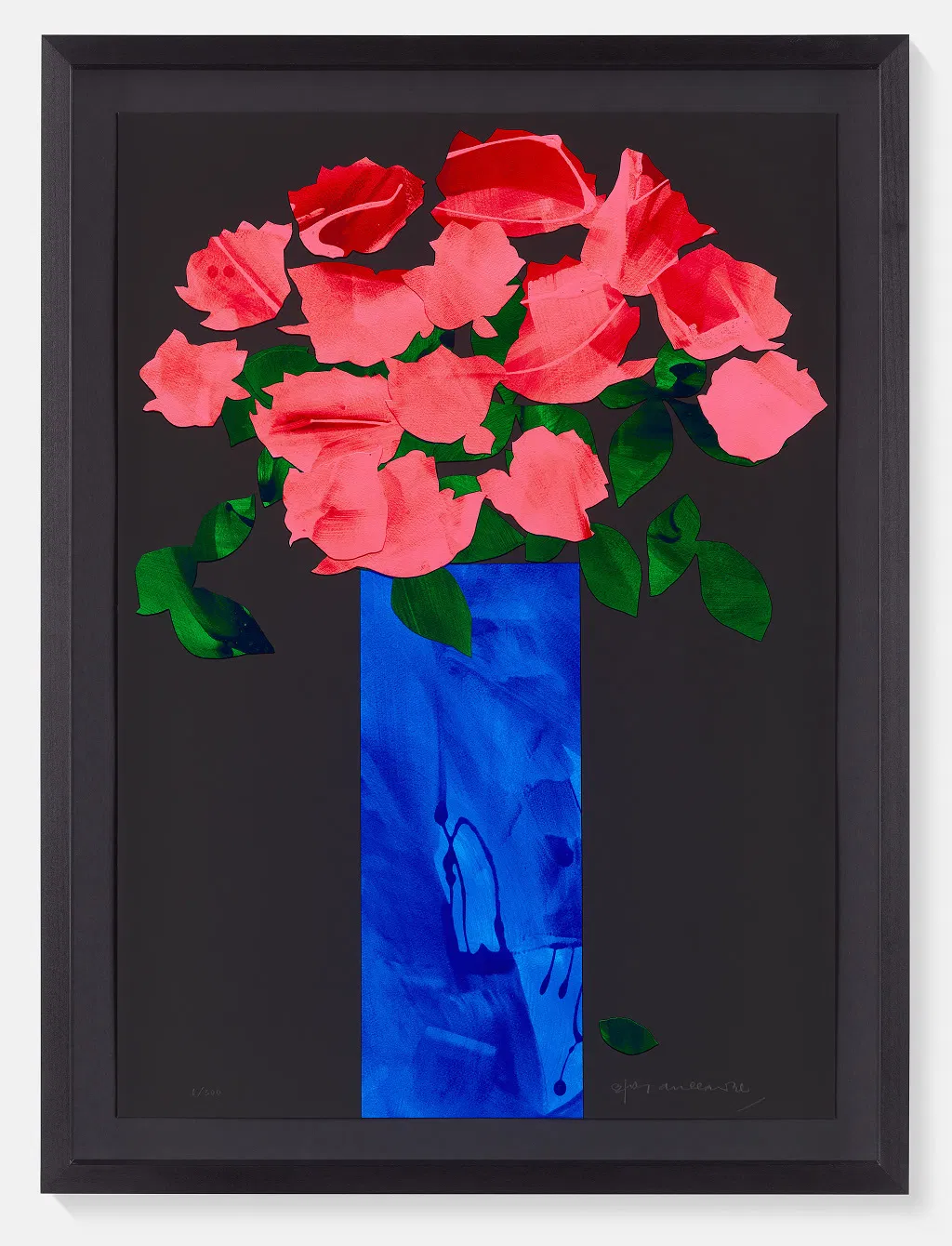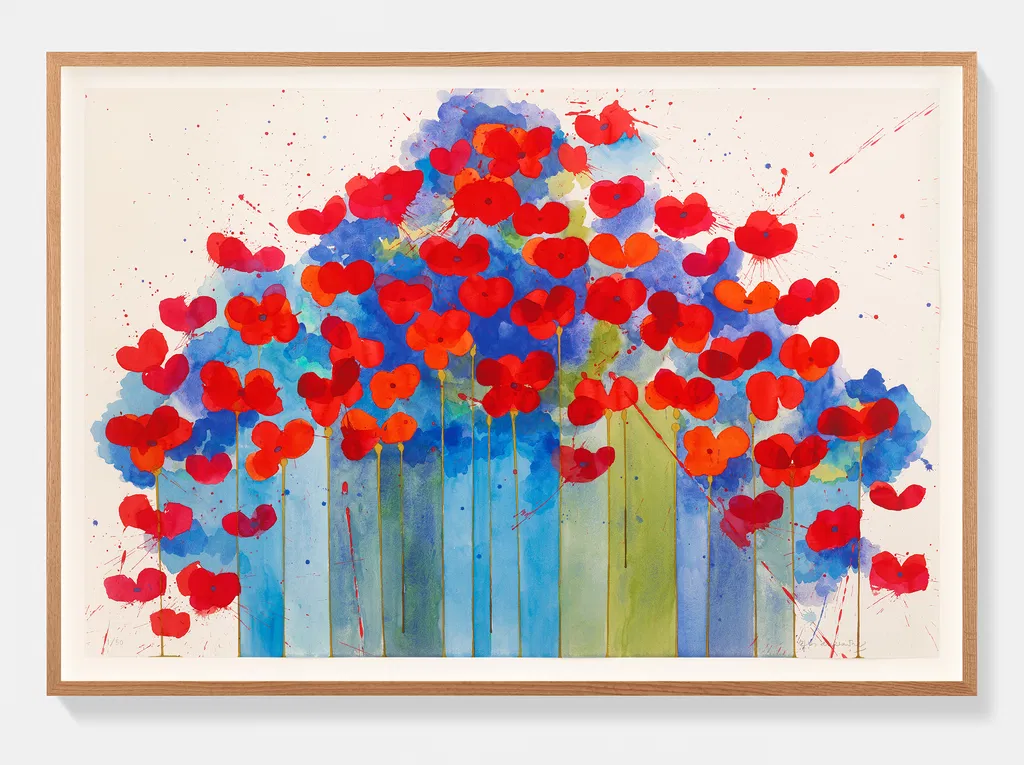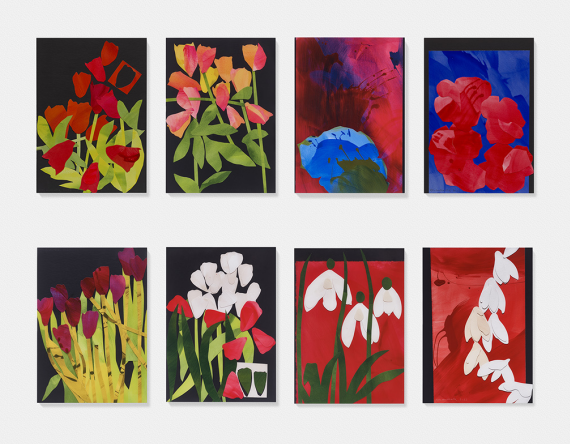Home
Artists
Brian Clarke
Over the last five decades, Brian Clarke has produced radical works that engage with multiple media – including painting, collage, stained glass, ceramic, sculpture, leadwork, mosaic, tapestry and furniture. Widely considered the most important artist working in stained glass today, he has revolutionised the medium, pushing the boundaries of what it can achieve.

Interested in Brian Clarke?

Brian Clarke
Nocturne in Blue
G8-1

Brian Clarke
Vivid Presence
G6-9

Brian Clarke
Concordia
G7

Collages
‘Collages’ are based on Clarke’s recent series of works on paper in which he turned to the incredibly intimate format of collage to capture the nature around him. Using his scissors to ‘draw from life’, Clarke’s subjects were ostentatious wildflowers in a garden and elegantly arranged blooming buds.

Collages
Collages by Brian Clarke is a series of 327 unique works created in 2022 and 2023. For this series, Clarke turned to the incredibly intimate format of collage to capture nature around him, using hand-painted paper and scissors.

Vespers
Vespers by Brian Clarke is a series of over 500 vivid watercolour paintings on Velin Arches paper. In a collaboration between HENI and Phillips, the debut exhibition of Clarke’s entire Vesper series went on view at the Phillips' London galleries.

34:46
A Great Light: Brian Clarke in Conversation with Damien Hirst
Two of Britain’s most prominent contemporary artists, discuss Clarke’s 2023 exhibition: A Great Light.

13:58
Collages: A Discussion Between Brian Clarke and Hans Ulrich Obrist
World-renowned curator Hans Ulrich Obrist talks with British artist Brian Clarke.

14:06
The Great East Window: Brian Clarke
A history and personal reflection of the stained glass Great East Window of York Minster.

47:21
Brian Clarke, Norman Foster and Robert Storr in Conversation
An online conversation between the foremost practitioner of stained glass, architectural artist Brian Clarke and esteemed architect Sir Norman Foster, chaired by Robert Storr.

HENI Editions · 19 Dec 2024
HENI 2024 Year in Review
HENI looks back at the standout events, films, exhibitions and releases from 2024.

HENI Editions · 26 Jun 2024
Brian Clarke – The Vespers
The Vespers by Brian Clarke is a series of eight limited edition prints after his pivotal Vespers series of watercolours.

HENI Primary · 23 Nov 2023
Collages – Brian Clarke
Discover Brian Clarke's Collages, a series of 327 unique works released on HENI Primary, available until Dec 7.

HENI Talks · 07 Oct 2023
A Great Light: Brian Clarke in Conversation with Damien Hirst
Join Brian Clarke and Damien Hirst in ‘A Great Light’, an intimate HENI Talks film exploring their art, life philosophies, and the themes of their work.
About the Artist
Over the last five decades, Brian Clarke has produced radical works that engage with multiple media – including painting, collage, stained glass, ceramic, sculpture, leadwork, mosaic, tapestry and furniture. Widely considered the most important artist working in stained glass today, he has revolutionised the medium, pushing the boundaries of what it can achieve.
Born in 1953 into a working-class family in Oldham, UK, Clarke immersed himself in art from the age of 12, receiving a scholarship to the Oldham School of Arts and Crafts, and later enrolling into the North Devon College of Art and Design. An avid student of design, pictorial composition, drawing, printing and heraldry, he received his first stained glass window commission for a residential home before he was 20. At the same time, he was producing oil paintings, drawings and collages that document the breadth of his artistic interests.
A notable milestone was the 1978 exhibition GLASS/LIGHT, co-curated with stained glass artist John Piper and art historian Martin Harrison, the most extensive exhibition to date of stained glass of the 20th century. In the same period, he created a significant series of paintings, Dangerous Visions, in which the canvas is slashed, evoking a painful bodily wound clumsily stitched back together.
By the 1980s, Clarke began receiving commissions for large scale public projects such as the Royal Mosque of King Khalid International Airport (1982), Stansted Airport in London (1988), the Neue Synagogue in Darmstadt (1988), Al Faisaliyah Centre in Riyadh (1997-2000) and Pfizer World Headquarters in New York (1997-2001). For each of these monumental projects, Clarke drew from the surrounding architectures and cultures to develop a ‘Gesamtkunstwerk’, a total work of art which could harmoniously weave discrete artistic elements into a synergy of spiritual vision.
In his smaller scale projects, Clarke adapts his practice to make equally powerful statements. In 2008, he presented a striking series of leadworks at the exhibition Don't Forget the Lamb at Phillips de Pury, New York. In these works, lead becomes the dominant element, with textured inscriptions evoking the artist’s drawing hand and coloured accents made in stained glass.
Clarke's ongoing series of freestanding stained glass screens, produced with HENI, are some of the clearest expressions of his challenge to the traditional expectations of stained glass. These autonomous screens are awarded the full status of a single artwork, interacting with their architectural environment but not dependent on it.
With his recent series of lyrical mixed media works Vespers (2019-20) and the Collages edition of prints, released in 2023, Clarke continues to demonstrate his commitment to a radically diverse art. Merging tradition and innovation, rejecting conventions and uncovering new potentials, Clarke considers light his primary medium. Through this approach he produces art that is able to freely interrogate transparency, opacity, light, darkness, absence, presence, order and chaos.
By continuing to push boundaries of genres and mediums through his innovative engagement with technologies and poetic concerns, Clarke’s work seems to possess a unique depth, which affects viewers in unique ways, going beyond vision into the realm of the invisible.










